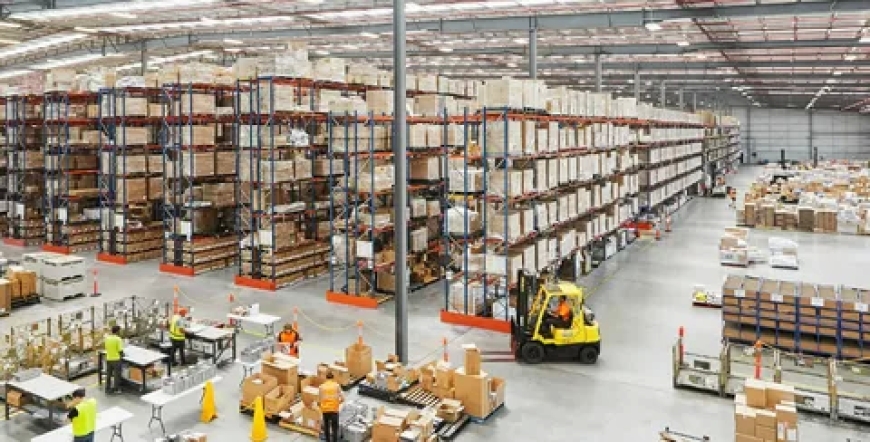How Do Top Solutions for E-commerce Warehousing Improve Efficiency?
Discover how leading solutions for e-commerce warehousing enhance efficiency through advanced inventory management, automation, and smart warehousing technologies

In the fast-paced world of e-commerce, efficiency is the linchpin of success. As online retail continues to grow, the pressure on warehousing and fulfillment operations intensifies. To meet consumer expectations for speed and accuracy, businesses are turning to innovative solutions in e-commerce warehousing. Here’s how the top solutions are transforming warehousing practices and driving efficiency.
Advanced Inventory Management Systems
A robust inventory management system is one of the core components of an efficient e-commerce warehouse. Top solutions utilize real-time tracking and automated data updates to view inventory levels comprehensively. These systems employ technologies such as barcoding, RFID (Radio Frequency Identification), and IoT (Internet of Things) sensors to ensure accurate product tracking.
How It Improves Efficiency:
Real-Time Visibility: Provides up-to-the-minute information on stock levels, reducing the risk of stockouts or overstock situations.
Automated Replenishment: Triggers automatic reordering when inventory falls below predefined thresholds, ensuring optimal stock levels.
Reduced Errors: Minimizes manual entry errors and discrepancies through automated data capture.
Automated Picking and Packing Systems
Automation in picking and packing is another major advancement driving efficiency in e-commerce warehousing. Technologies such as automated guided vehicles (AGVs), robotic picking systems, and conveyor belts streamline these critical processes.
How It Improves Efficiency:
Speed: Automation speeds up the picking and packing, allowing for faster order fulfillment.
Accuracy: Robots and automated systems reduce human error, ensuring orders are picked and packed accurately.
Cost Savings: Reduces labor costs and operational expenses by minimizing the need for manual intervention.
Warehouse Management Systems (WMS)
A Warehouse Management System (WMS) integrates various warehouse functions into a single platform. Modern WMS solutions offer features like task management, real-time data analytics, and integration with other systems like Enterprise Resource Planning (ERP) and Customer Relationship Management (CRM) systems.
How It Improves Efficiency:
Streamlined Operations: This department coordinates various warehouse activities, such as receiving, storing, and shipping, from a unified interface.
Data-Driven Insights: Provides actionable insights through data analytics, helping optimize warehouse layouts and workflows.
Enhanced Communication: Facilitates better communication between different departments and systems, improving overall operational harmony.
Dynamic Slotting and Layout Optimization
Dynamic slotting involves adjusting product storage locations based on demand patterns. Advanced warehousing solutions use data analytics to determine optimal locations for high-demand items, reducing the time and distance traveled during picking.
How It Improves Efficiency:
Reduced Travel Time: Warehouses can minimize travel time and improve picking speed by placing frequently picked items closer to the packing area.
Increased Space Utilization: Optimizes warehouse space by ensuring that storage locations are used effectively based on demand.
Enhanced Productivity: Improves overall productivity by streamlining the movement of goods within the warehouse.
Integrated Shipping Solutions
Shipping solutions integrated with warehousing systems play a crucial role in improving efficiency. These solutions manage everything from label printing to carrier selection, ensuring that orders are shipped promptly and accurately.
How It Improves Efficiency:
Automated Labeling: Automatically generates and prints shipping labels, reducing manual labor and errors.
Carrier Optimization: Select the most cost-effective and reliable carriers based on shipping requirements and destination.
Real-Time Tracking: Provides customers with real-time tracking information, enhancing transparency and reducing inquiries about order status.
Cross-Docking
Cross-docking is a logistics practice where incoming shipments are directly transferred to outbound shipping without intermediate storage. This approach is particularly useful for high-velocity items and helps to expedite order fulfillment.
How It Improves Efficiency:
Faster Turnaround: Reduces the time goods spend in the warehouse, speeding up the order fulfillment process.
Reduced Storage Costs: Minimizes the need for long-term storage, reducing warehousing costs.
Improved Flow: Streamlines the flow of goods from suppliers to customers, enhancing overall operational efficiency.
Real-Time Analytics and Reporting
Real-time analytics and reporting tools allow warehouse managers to monitor and analyze key performance indicators (KPIs) on the fly. These tools provide insights into warehouse operations, including order accuracy, fulfillment speed, and inventory turnover.
How It Improves Efficiency:
Informed Decision-Making: Enables data-driven decision-making by providing actionable insights into warehouse performance.
Continuous Improvement: Identifies improvement areas and allows quick adjustments to optimize processes.
Performance Tracking: Monitors performance metrics in real-time, helping maintain high efficiency and service standards.
Cloud-Based Solutions
Cloud-based warehousing solutions offer the flexibility and scalability that on-premises systems often lack. These solutions allow for easy integration with other systems, remote access to data, and scalability to accommodate growing business needs.
How It Improves Efficiency:
Scalability: Easily adapts to changes in business volume and requirements without significant infrastructure changes.
Remote Access: Provides access to data and systems from anywhere, facilitating remote management and oversight.
Cost Efficiency: Cloud solutions are typically subscription-based and managed by the service provider, reducing the need for expensive hardware and maintenance.
Conclusion
The top solutions for e-commerce warehousing significantly enhance efficiency through advanced technologies and innovative practices. From automated systems and real-time inventory management to integrated shipping solutions and cloud-based platforms, these advancements address key challenges in warehousing and fulfillment. By leveraging these solutions, e-commerce businesses can streamline operations, reduce costs, and improve service levels, ultimately achieving a competitive edge in the rapidly evolving retail landscape.
What's Your Reaction?
























